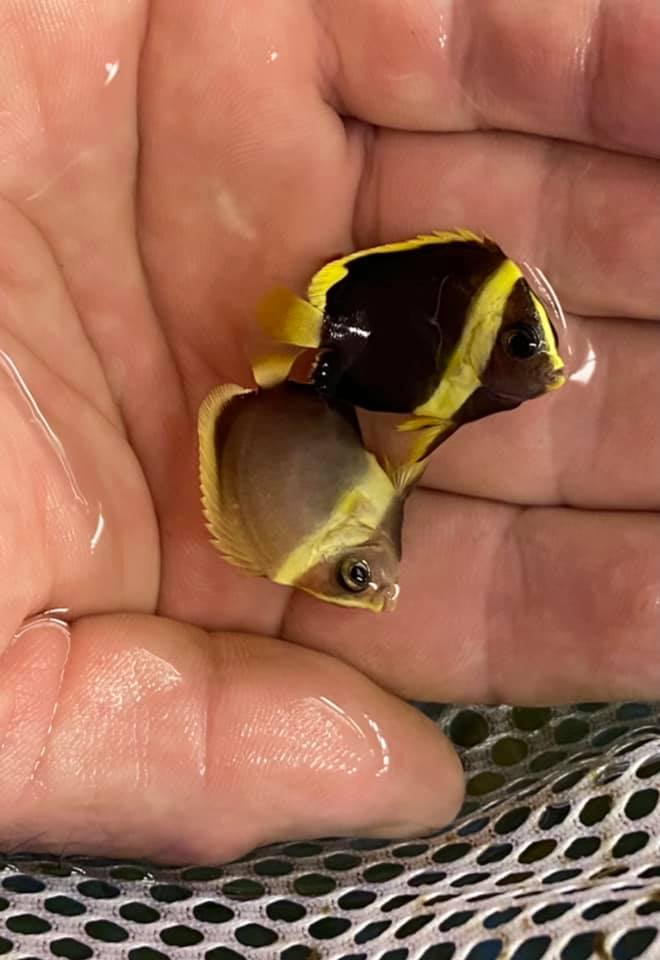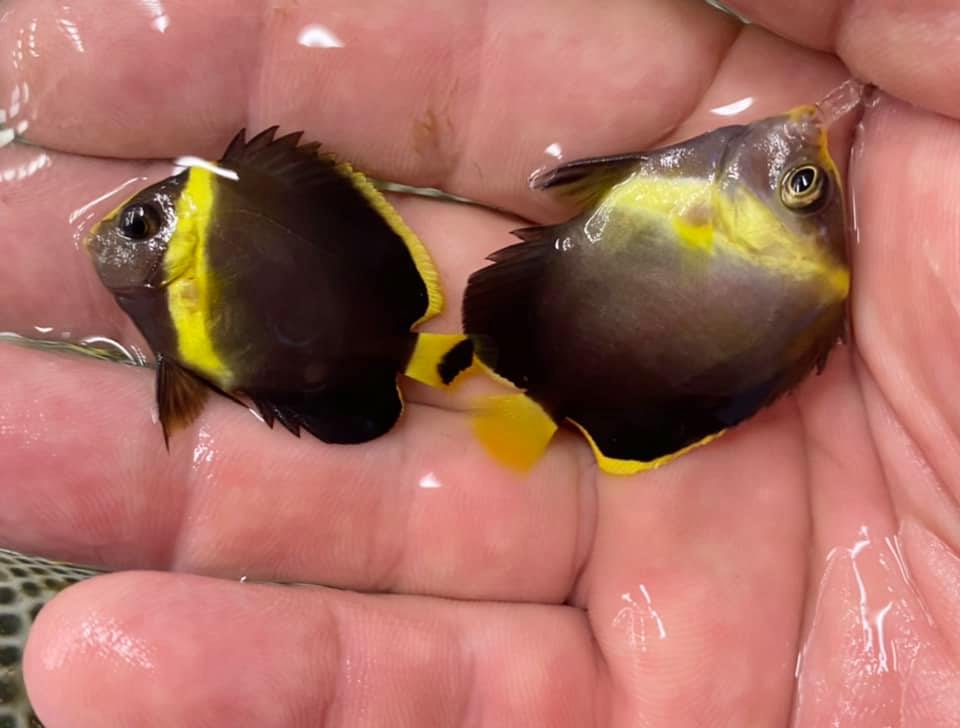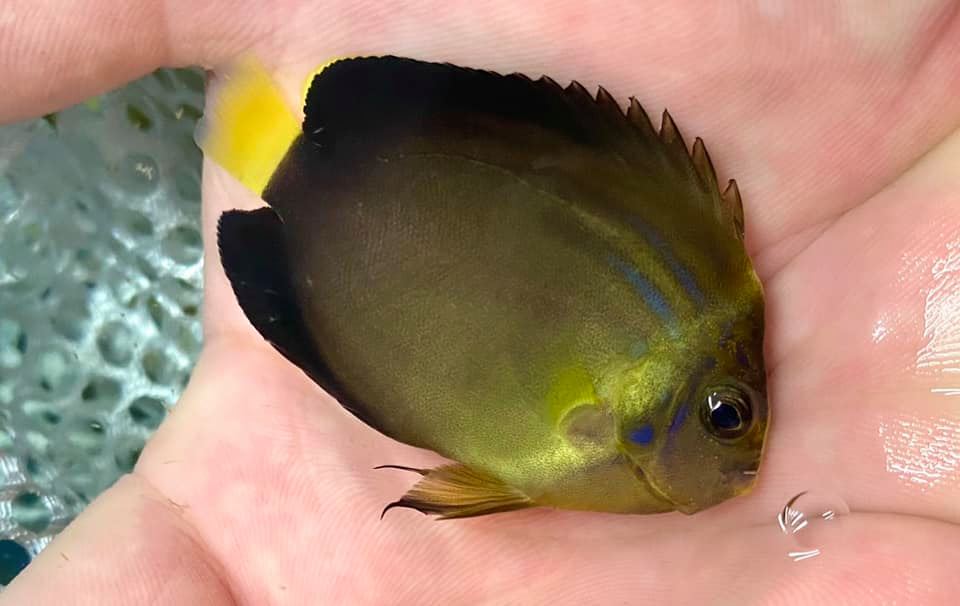
via Poma Labs
From Dr. Matt Wittenrich:
“Maze angels are incredibly diverse and one of our favorite angels. A few years ago we created the Blue Phantom, a hybrid of a Blueline Angel and the undescribed Black Phantom Angel. Just recently, we have crossed one of our hybrid Blue Phantoms [Black Phantom X Blueline] with a wild Maze Angel.
“Here are a handful of the juveniles. Note the diversity already. Some have all black pelvic fins, while others have black and yellow. Some have black wedges on their tails while others are solid yellow. These have cool potential for some awesome patterns.”

“Continuing in the enigma of the Maze Angelfish we have made another new hybrid cross between a wild Maze Angel and a Blueline Angel. Some of these already have unique patterns. We have high hopes for these and can’t wait to see where they land on the spectrum.”

Poma Labs founder, Dr. Matthew L. Wittenrich, says, “I have been obsessed with Maze Angels from before I could ever afford one. The opportunity to breed them and their close relatives to see what falls out has been too tempting not to try. It has taken a while to assemble the breeders, but we have been busy. We have bred and have juveniles of:
- Maze x Maze
- Maze x Blue Phantom
- Blue Phantom x Blueline
- Blueline x Blue Phantom
- Blueline x Maze
“I am sure there will be some more crosses to fill the gaps and it will be interesting to see what falls out.”
Wittenrich is alluding to the fact that while Maze Angelfish have been given the scientific name of either Chaetodontoplus cephalareticulatus or are sometimes lumped into the Orangeface Angelfish species, Chaetodontoplus chrysocephalus, many suspect that the Maze angelfishes are the product of naturally occurring hybridization, and most suggest that at least one of the parental species involved is the Blueline or Blue Striped Angelfish, Chaetodontoplus septentrionalis.
Wittenrich believes that the other parental form is the currently undescribed Black Phantom Angelfish, a more black form from the Northern Philippines that has also been bred at Poma Labs. Wittenrich created the Blue Phantom Angelfish to test his hybrid origin theory for the Maze Angelfish but gives the progeny the distinct name to differentiate from “Maze” angelfish that originate from wild stocks. The Bluespotted Angelfish has also been raised as a possible parental species.
If Wittenrich’s hypothesis were to prove true, one could argue that the Blue Phantom X Maze hybrid, announced here, might actually be simple the mating of a captive-produced Maze to a wild-caught Maze. The other new cross represents a back-crossing to one of the suspect parental species behind the Maze Angel, and might be similar to the Blueline X Blue Phantom in results.
“I have a few interesting notes to share,” concluded Wittenrich. “A lot of folks thought Bluespotted Angels (Chaetodontoplus caeruleopunctatus) were in the Maze mix given the small blue spots on many Maze Angels. It seems, though, that this trait is more from the original Blueline x Black Phantom cross. Also, the black wedge tail seems to come from the Black Phantom.”
Experimental breeding, and investigating the outcome of these many similar crosses might yield further clues as to the origins of the Maze Angelfish while also producing new varieties for the aquarium trade. Both new hybrids will become available in the next week, with the anticipated average retail price being around $1,000 per 2-inch fish, although certain individuals and other sizes may carry different pricing.





Very interesting article! Best of luck Poma Labs!!
Would also be interested in a article about the Author Matt and his career,
What all fish Matt breeds?